Mobile marketing is the process of advertising to mobile users through their mobile devices, such as smartphones and tablets. There are a number of ways to do mobile marketing, including text messaging, mobile apps, mobile websites, and mobile ads.
To be effective, mobile marketing needs to be integrated into a broader marketing strategy and tailored to the unique needs of the mobile user. For example, mobile users are more likely to be on the go and have shorter attention spans than desktop users, so mobile ads need to be concise and easy to read.
Additionally, mobile users are more likely to use apps than desktop users, so businesses need to make sure their mobile website is optimised for app users. When done correctly, mobile marketing can be an effective way to reach and engage with mobile users.
Mobile Marketing Guide – PDF eBook
Quick Mobile Marketing Tips For More Leads & Sales
- Make your website mobile friendly.
- Create mobile specific mobile friendly content.
- Focus more on Google my business optimization.
- Do SMS marketing
- Do QR code marketing
- Do WhatsApp Marketing
- Add personalization
- Speed up your website
- Include videos in your marketing
- Keep easy site navigation & mobile menu
- Develop Mobile app
- Focus on App Store Optimization
- Develop better app-only or in-app content
- Optimize for voice search
- Go for mobile ads
Mobile App: The New Way to Search

We are moving incredibly fast towards a future when mobile apps will rule the roost. Keeping this distinct possibility in mind, internet marketers are gearing up for that future with mobile app-based searches. As obvious, there is a demarcation in how and what a user searches for through a computer as compared to a mobile app. The latter is usually more direct, specific and real-time. All these factors combine to make mobile app-based search the arena where the big boys are padding up to dominate. This post will give you a touchdown on what works for mobile app searches and what falls flat.
The Importance of Mobile App Searches
If you want a quick look at the importance of mobile app searches, you need not explore farther than Google. The search engine giant is awarding extra kudos and ranking favors to websites that have a functional and user-friendly mobile version. Even in SERPs, labels that are mobile-friendly are getting a strong preference over traditional search words. In fact, Google has already laid the pitch for a search future that shifts away from user experience and HTML tweaks. It will be all about conversational searches on mobile apps and knowledge graphs.
Trivia: comScore tells us that among the top 10 internet-based businesses, 34% of the visitors tune in through mobile apps.
How to Rank in Mobile App Searches
How does a common user searches for mobile apps on the internet? Through Google or Apple Play Store! How do you make your mobile app available to these users? By optimizing your app on these app store searches! This is technically known as App Store Optimization or ASO. This is similar to SEO, though there are many differences. The basic idea is the same: trump other players in the same business arena to grab the top slot and be more easily accessible to searchers. The ASO depends on mainly two factors: the performance of the app and the usual keyword structuring.
How well you optimize your mobile app through title tags, descriptions and the traditional works will decide on the keyword structuring in ASO. The performance part will be decided by the reviews and ratings put up by users along with the download speed. Google Play Store uses other factors as well, like authenticity of web links etc that it has used for years in the SEO zone. Since there is the question of ranking in ASO, you would surely like some help with the keyword structuring. Tools like Thetool.io AppTweak, AppRadar and Sensor Tower will guide you.
To optimize the performance of your mobile app, there are some factors that you can take care of to surface to the top. Use a tool like Apptentive to boost the ratings and average rating number of your mobile app. These tools are really useful in shoring up the positive quotient of your mobile app and influence the ranking scenario on app stores. There is something else that you can do: build up an internal linking framework on the app store. This will ensure that you grab eyeballs in searches on associated or interlinked mobile apps as well.
The Road Ahead for Mobile Apps
Now that everyone is waking up the immense possibilities of mobile apps, the future is pretty exciting indeed! We are moving to a time when you can issue verbal commands to your mobile app and instead of booting up on your device, it tries to get the job done! For example, when you use a voice search message like ‘Burger takeaway joint nearby’, it does not launch an app. It makes the app work and throws up results that show addresses of burger joints close the location of the search. That happens when knowledge graph is integrated with mobile apps. It gives way to something that is being called App Action.
How to make a mobile app without coding [ Video tutorial]
The Final Word
The traditional sense of searches is being rapidly replaced by mobile apps, as evident from the discussion above. What makes is more potent is that it does not steer clear of traditional search practices. Instead, it fine-tunes those rough edges and makes mobile app searches more user-friendly, a perennial objective of online searches. Like other digital marketing tools, it will take some time to shape up but if you do not wake up mobile app opportunities, you will lag behind.
Have you tried mobile app searches in your business? You can share your concerns and thoughts here.
The Near Future of Mobile Marketing

You have known it all along but still nothing prepares you for what is to come. Sounds a little dramatic, but that is the writing on the wall for the mobile marketing world. You have been reading blog posts and articles about the proliferating mobile marketing industry. From what you can read in the residual tea leaves of the digital marketing industry, it seems like we are still on the tip of the iceberg. Things are about to get more combative and competitive. If it were not so, why would brand names like Apple and Google equip themselves up to fight the mobile war? If these bigger names are doing it, you have to be ready as well!
Facts & Figures & Future of Mobile Marketing
To make my point, here are some stats for consideration. By 2050, our known internet devices like computers, smartphones and tablets will comprise only about 25% of the total number of internet devices! What it means is that we will see the drift towards devices like smart TVs, refrigerators and items using Internet of Things (IoT). Wearable devices like armbands are also slated to rule the internet world. While the interaction of people with devices like smart thermostats and the likes will be limited, they will still be quite dominant on the scene. You need to note how the number of non-keyboard devices will make the cut.
Related reading: Growth of digital marketing in India
The rise of Voice Search in Mobile Marketing
With keyboards slowly moving out of the devices of tomorrow, the conventional search patterns for the mobile industry will change as well. If there are no keyboards on the devices that are more popularly used, how will people search? The answer is the rise of Voice Searches. Did you know that the number of voice searches conducted on Google during 2015 was double the amount in 2014? That clearly tells you the emerging picture! For the super-busy professionals multi-tasking furiously, it makes more sense to use voice commands rather than type. While watching the Apple ad for iPhone 6’s Siri, this reality hit home much closer.
Google’s Voice Search

Do you have Google Assistant installed on your smartphone?
Then you must be wondering why there are two voice search options available on your screen, one at the bottom and one coming down from the top! The former is the traditional voice search button of Google which the company has been using for years. The latter is surely the Google Assistant option to help you find what you are looking for through the voice search.
Now, you are confused which to use, especially when one doesn’t have all the functions of the other. Google Assistant covers every aspect that was in the domain of the traditional voice search button. So, this age-old method is now being phased out, now that it’s become quite redundant. Usually, this voice search was trigged on Google apps through the ‘OK Google’ option. There was also the microphone button to guide you to the option.
You could also use this button for sending texts or making calls on your Android smartphone. With the voice search being shown the door, Google Assistant will handle all these functions for you, in addition to several others. It can control smart home device, along with bringing third party apps into the picture to work in tandem with Google.
So, if you have Google Assistant on your Android smartphone, you will be able to make use of this new function. However, if you don’t have that option, you can continue to use the traditional voice search. There will be no problems for you if you have not activated Google Assistant on your smartphone.
Some facts / Research data about Voice Search
According to studies conducted by Stone Temple, a globally renowned digital marketing agency, more people are using voice searches to find information in 2019 than they last year. The jump is a big leap to 25% of the respondents than 15% last year.
Despite this big jump, if you look at the bigger picture, voice search is still placed 4th in the pecking order when it comes to how people find information on their smartphones. The first preference of users remains the ever-dependable mobile browser on their phones, followed by a separate search app installed on the phone. The search window of the phone comes in third, followed by voice searches.
There is another important piece of information coming up through this survey. Women are more likely to use voice searches than men. Stats reveal that men use voice commands for every other purpose than texting and searching for information. For these two requirements, they prefer to type in what they need. Women are more accepting of the voice searches.
This, and the fact that more people are now using voice searches, is encouraging more digital marketing companies to develop content ideally suited for voice searches. Voice search content creators can be buoyed by this study which has also revealed that those respondents who have used voice search earmark it as their preferred mode of searching. The ease and convenience of voice searches is something that they don’t give up, even when they have other options.
The only downside to this is that there are many who are yet to use voice searches at all. These are more likely to be people who still prefer mobile browsers and apps for their searches. Once they engage with voice searches, they will take to it but the initiation is not happening. Voice searches also happen to be placed 6th when it comes to answering the question: “Which of these applications have you controlled with voice commands?”
The choices which beat voice searches to the top include making calls, texting, getting directions, playing music and setting up alarms.
Digital marketers will take plenty of lessons from this survey, that’s for sure!
Content Creation Process in Mobile Marketing
Now that the mobile marketing world is slated to change, will it not affect the content creation process? Sure, it will! Experts have pinned down five different ways in which content will be seen in the coming years:
- Curate
- Monetize
- Distribute
- Host
- Create
Have you noticed how people are catching up on news through Facebook and Twitter and not necessarily through news sites? What Facebook is doing here is to curate the news items together for people to check up. They are also distributing content around platforms so that there are more eyeballs checking them out. To cut deeper, they have started something called Instant Articles. This helps them monetize and host content. By the actions of Facebook, you can clearly understand how content needs to be treated in the mobile world of the future.
Let me take you to another room in this fascinating world! The room of mobile apps. This is a topic that is debated enthusiastically across the online world and among digital marketers. I have written extensively about rising up to the challenge of using and optimizing mobile apps.
Do you know that 44% of the time an average user spends on the digital marketing forum is through mobile apps? This survey includes time spend on desktops or laptops and mobile web usages. Even then you have this staggering amount of time spent on mobile apps! Do you still doubt the power of this medium in your way to digital marketing nirvana?
Mobile Marketing Challenges
The mobile app world is not without challenges. Only one-fourth of the apps downloaded by a user are used daily. What’s more, one-fourth of them are never used at all! This can spell doom for app makers and to dispel that, Google has launched app indexing. By this feature, content on the mobile apps will be indexed in search results. I had written about this feature some time back on this blog.
As a footnote, here’s a peek at another hurdle: the question of speed. 57% online shoppers dumb a site if the page does not come up within 3 seconds! For users in the age range of 18 to 24, 65% of them expect the site to be up by 2 seconds! This clearly tells you that you need to do something fast!
Related reading: How to speed up your website
The Implications of Google’s Game-Changer for Mobile Apps – Indexable App-Only Content
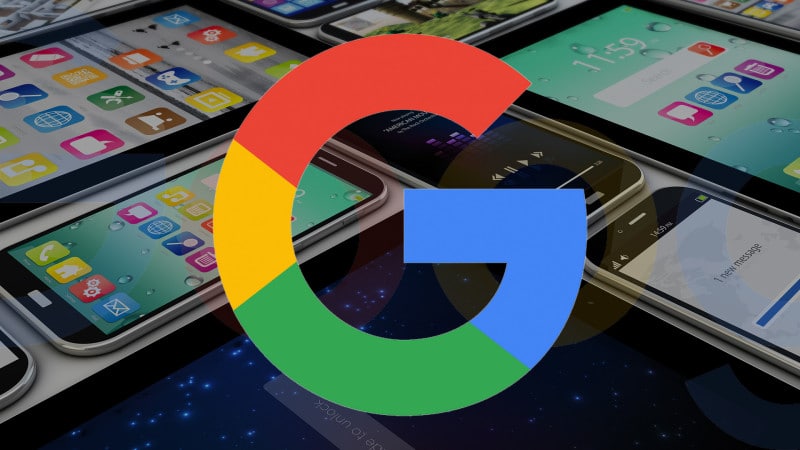
An announcement from Google recently holds the potential to change the way you look at digital marketing through mobile apps. Before I come to the announcement, let me bring you up to speed with what the situation was before it.
When you searched for something on the Google app in your mobile phone, it indexed the usual web results, along with app-only content gleaned from apps installed in your phone or tablet. For example, if you searched for bars in Boston, you got search results from relevant websites and from apps already there in your phone.
With this announcement, Google will show you search results from app-only content gleaned from apps, no matter if they are on your phone or not. To borrow the above example, you will get relevant content picked up from app-only platforms that are available for indexing. The presence of these apps on your phone becomes irrelevant.
This announcement has long term and wide repercussions. App developers can now work on their app-only content keeping in mind the possibility of this content to be indexed in SERPs. What it means is that there is a possibility for this app-only content to find a viewership extraneous to what they already have via users with their apps installed on their devices. It throws up larger potential for digital marketers eyeing mobile app development as a tool to grab customers.
The first point that app developers have to work on is the use of long-tail keywords. These were of little relevance if not for searchers viewing them through the help of this announcement. But in this changed scenario, they are like gold dust!
Moreover, it frees up your previous necessity to match app content with what you have on the website. Otherwise, you ended up losing the valuable SEO juice for your content. Not anymore! Since app-only content is ‘index’able, you can work on app content exclusively and independently of what you have on the website.
To get the long-tail keyword mix right, you need to work on the app indexing API. Now that Google will look at app content with special eyes, you need to score brownie points with this API. You need to convince Google that your content is worth indexing and one sure way to do that is to implement the directions specified by this API. It gives off a green signal to Google and paves the way to make through to the SERP top bracket.
Try showing Google how your app content is loved and browsed by users. A good way to do that is to show the average time spent on the app and how users spend it. These are all ways to show Google that you deserve ranking status.
Of course, you need to keep in mind at this stage that this entire process is in the beta stage right now. So, don’t get your hopes too high immediately! The experiment is going on for some apps in a limited and controlled space. These apps have agreed to participate in the process to take it through the beta stage into the full-blown launch.
Despite the limited environment, it will be worth your while to learn the new ropes of the trade so that you get something of a head start when it actually rolls out in full force. It will also take a while to suit your app content for this kind of an exposure so that you can take full advantage of it. After all, in this competitive arena, you need to stay ahead of the curve as much as practicable.
Mobile Marketing and Its Effectiveness
Mobile usage among the people is rapidly increasing with its extreme. The world of text SMS, MMS, Blue-tooth, Audio calls and downloading games, ring-tones and application has become a trend. In Today’s Market Words like Smartphones, Mobile Sites, Geo-location, Social Media Marketing these all has become mundane .
Today everyone is aware of mobile marketing and strategies. Maximum companies are creating marketing goals before the year starts and measures results at the end of the years. Now, mobile marketing is also a part of their strategies and goals. Mobile tagging can help us better understand the mobile consumers and deliver more relevant messages. Here we are going to learn the stages of mobile marketing and its effectiveness.
Business must mobilize fast. Business services must now be available anywhere, anytime, on any mobile device. Yet less than 10% of business services have an integrated mobile strategy as connecting to one mobile OS is no longer enough. In 2011, over 85% of handsets shipped globally will include some form of browser.

Mobile Device outsold PC’s in 2013.
Over 1 Billion of the world’s 4+ Billion Mobile Phones are Smartphones. Global app downloads are predicted to reach 76.9 billion in 2014 and will be worth US $35 billion. Financial services, technology, and the healthcare industries are seeing the greatest adoption of the tablet for business use. Mobile workers get more done; enabling workers to add 51 minutes to their work day time. Smartphone usage is speedily raising every corner of the globe as mobile consumers stay connected and informed.
With more than 5 billion mobile devices in use on the planet today, we are growing even more connected, and for nearly half of Americans leaving their mobile devices on all the time is the norm. Mobile has become life of maximum human being surviving on the planet also has become most pervasive- media in history.
Moving Towards Mobile Enterprise
If taken important measures for enhancing mobile friendly environment, the productivity of business can be improved with increase revenue & gain market share. Any organization that empowers its constituents to access information, to communicate and to collaborate efficiently in real time, anywhere, anytime can completely rely on Mobile marketing.
Tips on How You Can Level Up on Your Mobile App Marketing

There are hundreds of thousands if not millions of mobile apps out there and more are created every day. Apps development has definitely emerged as one of the most reliable tools of mobile SEO services. Everyone’s on the lookout for the next big app and every mobile SEO company is working hard day in and day out to claim this spot.
However, it is clearly a saturated market as mentioned above. Why would mobile users prefer your app over the others? What you need to understand is it’s not always the app itself, but how you package it. In other words, it’s all about marketing.
Here are a few tips on how you and your partner mobile SEO company can make your app rise up above the clutter.
Drumming Up Downloads with Incentives
It is human nature to take advantage of free things – free taste, free parking, free seo course, free hotel room upgrade and many more. Make the age old practice of giving away free stuff work to your advantage by incentivizing your downloads. There are several advertising networks that you can tap to frontload your app and the rewards you are doling out.
However, keep in mind that when giving out rewards, make sure that they are relevant or appealing to your target audience. Best practices in mobile SEO services dictate that all offerings need to be something that is useful. It’s useless to give someone game currencies if your downloaders aren’t gamers at all. Be generous, but incentives should be carefully thought out.
Venture Out Away from the Clutter
While the Apple Store and the Google Play Store clearly dominate the apps market, there are other apps stores out there that you and your partner mobile SEO company can explore. Of course, you might hesitate and think that you are going small instead of going big. However, remember that in mobile marketing, everything is on steroids. A humble mobile app store today can transform into a force to be reckoned with in no time.
Further, these app stores usually offer app developers to advertise their apps on a click per impression (CPI) pricing model. This might entail more investment from your end, but mobile SEO services based on CPI will attract more engaged downloaders or those who are really interested in your app and not just getting it to earn rewards.
Go Traditional with Mobile Display Ads
If done right by a reputable mobile SEO company, mobile display ads are great marketing reinforcements to promote your mobile app and can run side-by-side with your other non-rewards based campaigns. Make sure that if you go this route, you have a dedicated landing page where you will drive traffic to. For a simpler execution, you may just redirect them to your Apple Store or Google Play Store app page.
An App Won’t Market Itself!
It is unfortunate how many great mobile apps have come and gone just because they were not promoted effectively by the developers or the brands and businesses that commissioned them. Mobile SEO services are now cutthroat and you have to take a more aggressive stance when promoting your app.
Mobile Application Development: aspects

Mobile application development is the way of making and creating good and sensible programs for the different cellphones and gadgets. These software programs are mostly installed during the making of the phones and other gadgets or are taken from the bought from the developers and later on used. Some people also download these services from the actual websites. But as this is a very wide field, this article will provide you better information so that you can understand about these development functions.
Software and applications for cell mobile phones are being planned and designed to run on every type of mobile phones. High technologies are used for Android OS or for Blackberry OS and even for high tech gadgets. Mostly all the phones use ARM processors, the specifications and binaries of the mobile app are implemented in machine format for reading the brand processors. Growth of mobile programs is done by using resources for particular mobile techniques and systems.
As a mobile program designer, it is always important to figure out the conditions or say environment so that better applications are developed. Developing mobile applications helps the designer in getting exposure to the different resources of the trade, allowing him get codes, analyze it, and then manage the applications for some mobile phones and their different operations.
Some of the popular known developments are Application Craft, Blackberry, Aqua, Android, etc. These program developers are very talented; they are expert in their field make very good functions for the mobile phones.
After every stage of growth, the designed segments of the mobile application faces a series of assessments to figure out whether it works according to the needs and requirements of the mobile sets or not. Every development service firm determines people who perform the final checks, they examine the performance assessments. For mobile application development, there are few conditions which are utilized for different mobile phones operating systems like MobiOne, Google Android Emulator, Blackberry Stimulator, etc.
These are few things which are should be considered and kept in mind whenever you are looking out for mobile application development services. These services are very important for the mobile applications and other gadgets. Sometimes, finding a good service can be time consuming and difficult as lots of time and effort are required in analyzing the work details of these services.
It should be able to provide continuous growth of different sections and can examine all the stages for a fully developed program. It is like software and web development applications, but it is specially designed for mobile related fields and services. Thus, these development programs are very much needed for fulfilling the needs of the mobile and other gadget users.
Mobile App Development Cost and Factors Influencing It
Mobile phones or smartphones, destined solely for communication purposes a few years ago, have re-defined and in fact influenced the lives of businessmen as well as individuals to a great extent nowadays. We have reached a stage, from where we cannot afford to live without mobile phones as they have become almost inseparable from our day-to-day lives.
The development of smartphones evidently shows that they have got a lot more left than just communication media. The recent development in the field of smartphones is mobile apps. They come out with fantastic features which have made smartphones invincible.
With the help of apps, it is very possible to locate people, shops, play games, watch videos and music, safeguard our lives, improve business, etc. quite easily. I have named a few benefits they offer; in fact, there are a lot more features packed within the mobile apps.

Well! From the encouraging features of mobile apps, it is significant to learn the cost associated with developing a mobile app. If you run a business, mobile apps could play a meaty role in the improving the client base. However, you must be aware of the cost and budget beforehand in order to taste success; if you don’t, then a lot of money from account will be drained in no time. So, I have decided to come up with this article highlighting the crucial factors that influence the cost of mobile apps.
(1) Pick the right type:
As many know, there are different types of apps available in the market. Mobile apps are available for different purposes. It is necessary to learn who your target audiences are to pick the exact app that suits your business. The cost of the mobiles is directly proportional to complexity of the programming. In sense the less the complexity the less the cost. The apps for games are highly complex and they take a lot of time for the developers. So, obviously they cost on the higher side. If developing apps related to games is your agenda, then you must be affluent enough to handle them.
(2) Extensive functionalities:
Functionality and easy-to-use feature are other two factors that play a vital role in the business improvement. At the same time, they do involve some serious money while doing so. The more functionality you add to the app the more it costs. So, ensure the type of functionalities and their navigation features you plan for to estimate the budget.

(3) Developer impact:
While hiring a developer becomes inevitable for designing apps, saving one for your in-house operations is found to be a wise move. But, developers are too costly. As developing apps is a tedious and time-consuming job, hiring a team of developers is the ideal way to design out-of-the-world apps quickly. The other option would be hiring developers on an hourly basis but they will bill you for hours, and it is expensive as well.
(4) Designing:
Designing the apps is the yet another prospect the influences the cost. Only apps with impressive and trendy designs will go places. So, the designers have to come up with innovative strategies to bring up a perfect app. The more impressive the designing the more costly the designer. However, you have to go for the best designer to make your app a hit in the market.

(5)Apps submission:
Submitting your apps to the apps stores is the next step. You may have to spend a few pennies for registering and monitoring the revenue then on. In fact, you can appoint a manager for monitoring all your revenues as well; again it has to be included in your budget beforehand.
Well! You may opt for a high-quality firm that offers all the services for developing apps. Though contacting firms is proved to be cost-effective, you may have to pay them often for updates and feedback from the customers which may cost hefty. Anyway consider all these factors well in advance before setting up your hands on developing apps for your business growth.
I hope you enjoyed the article and it is useful for everyone who read it. Estimate the budget of your app development process to come out clean, fresh and innovative app serving the purposes of your business without any hassles and bustles.
Different Phases of Mobile Application Development -The Rising Scenario
Communication
Mobile Apps that keenly focus on communication and entertainment are majority preferred by millions of smart phone users. Communication apps are preferred for the major reason being getting connected with social media networks like Facebook, LinkedIn and Google+. Likewise, entertainment apps also find a great demand over mobile users. It has also been reported that entertainment apps are highly downloaded when it comes to paid apps.
Mobile application that allows gaming and music options are greatly preferred among smart phone’ers. As per a survey taken in May 2011, game applications stand a higher rank with 22% of downloads, followed by entertainment with 19% download rate.
Increased Browsing Experience
It has been proved recently that mobile web access rate has overtaken the web experience via desktops and laptops. And for sure anyone with an android, iPhone or tablet, it is damn sure he is gonna use the same for internet purposes. Apart from smartphones, there are several mobile developers that offer web solutions by means of several mobile phones. Hence it is obvious that mobile web usage is easy to that of laptop or systems.
Enhanced Productivity
Due to the consistency and increase in usage of mobile application, it has become widely important for any mobile app developer to come up with applications that keep upgraded and updating. As far as apps are concerned, what people look for is an advanced thing with more and more features, thereby pushing developers on to a competitive environment. With this, the number of apps released each year are becoming numerous.
Increasing number of Download sites
Smartphone users are over the world and hence mobile application have all to do with in today’s world. With more than 100 billion downloads so far, mobile apps are becoming extensively important for any user using Androids, iPhone, Blackberry and Windows phone. Hence there has occurred a rising demand over these apps. While these demanding apps can be downloaded directly from the developer’s site, most of them prefer downloading it from sites which are meant to serve this purpose. With the increasing demand of mobile apps, there has also aroused an increasing need for downloading sites.
Few Tips to succeed in Mobile apps development
Make it audience friendly
While on developing an app, ensure with your audience that what bothers them with the existing apps that were launched with the same motto as yours. Prior launch enquiry would help your app come up with an audience friendly thing.
Offer deals and discounts
If and all your product is featuring some great deals and offers, you are not going to show up with some great results. If you are really not interested in offering free apps, then go simply with package deals, which happens to be one best sale enhancement factor.
Never think about initial profits
As far as you are a beginner, do not expect much on profits and sales. Of course your product might be truly new and unique, but what needs is patience and exposure. If you could come up with some great offers and site promoters, it might help.
Social Networking apps
Apps that feature social media options are a great way to cover people at the earliest. Though this happens to be a competition rich field, it is easy to get along if your app really has great stuffs.
Payment solutions really work
Most of the apps fall down for not having an efficient payment system. Hence you can come up with apps that allows payment processing work better.
There is not too long to go with! Mobile Application Development is expected to show off great colors in the upcoming years. If there is something which could hit billions and billions of hearts in just five years, I would say it to be the Mobile Application Development – The one and only industry to boom out all throughout!
Overview of Popular Mobile Apps Development Platforms

Mobile Application Development is a term associated with the software apps development of medium and portable devices such as tablets, Smartphone’s, PDA and many more. These app or software programs are possibly set up in the system while in the production procedure by the production firm, downloaded by the customer on its own from the various applications provided organizations or web apps.
The increasing need for enhanced the quality or state of being practical in mobile gadgets have provided birth to excessive growing range of leading-edge technological innovation for custom made mobile app and the quickly increasing type of Smartphone devices. The customized developed mobile app development for mobile phones is an answer to all individual requirements for improved overall functionality of their portable gadgets.
Smartphone devices are gradually approved as ideal medium for multi-media allowed programs. Software companies have began marketing mobile app development systems and resources customized to meet up with the demands of Smartphone device users, programmers and learning resource limitations. A number of the well-known mobile app development system options are iPhone application development, iPad application development, android application development, Window based mobile application development also more mobile website development.
IPhone/IPad Apps Development:
Apple iPhone has been eye-catching with its outstanding GUI and its suitability beyond comparison. A few years back Apple released iPhone 5 which is modern edition of iPhone 4S. IPhone 5 consists of with high quality retina display, 8-megapixel iSight camera, Panorama, 136-by-640-pixel resolution at 326 ppi, Apple TV support at 720p, 4-inch widescreen Multi-Touch display, accelerometer and many more etc. which can make it most extremely effective ever.
It can also handle unbelievable apps which are available in the App Store. The iPad is a sequence of tablets created, designed and released in industry by Apple. IPhone app development and after presently iPad app development are built using Xcode which is a tool developed kit and released by Apple to allow developers to build, analyze and then promote their apps for each of the iPad and iPhone.
Windows Based Mobile App Development:
Windows based mobile is a concentrate OS created for mobile devices and Smartphone gadgets by the Microsoft. The windows based cellular was in the beginning created for handheld Windows-based computer means pocked PCs but then modified apart from others for mobile gadgets. The system for windows based mobile app development continued to be the most effective recommended and preferred within mobile devices and Smartphone gadgets. Various types of mobile apps are usually developed for the windows based mobile to excuse the real demands of the various businesses.
Android App Development:
Android app development is indicates of establishing new apps for the Android based operating system. Generally these apps are created in the JAVA programming language with the help of the Android SDK and also there are other development resources are also accessible in the market to develop powerful android apps. More than 500,000 applications are available in the Android Application market. The Android industry has also expanded to turn into desired and popular development apps between mobile programmers.
Mobile Web Development:
Mobile website development is the custom-made task your present site to mobile devices. Due to the fact of the fast variation of mobile devices and Smartphone gadgets, numerous persons are surfing web via their mobile gadgets. The distinctive sites are not suitable to be considered on a cell phone as they are created generally to be considered on personal computers. For this purpose the mobile website development presents the program to customize the current site to be considered effortlessly on cell phone devices.
Top 5 Mobile App Development Tools
- Xamarin. There is nothing better than the Xamarin to build native apps.
- Sencha. Sencha is for rapid mobile app development.
- Appcelerator. Appcelerator is used by mobile app development companies to build both native cross-platform applications.
- Ionic.
- Framework 7.
Best mobile app makers (Online free tools)
- Jotform Apps. Jotform Apps is a no-code app builder that helps you create fully customizable apps for your business for free.
- Appy Pie.
- BuildFire.
- GoodBarber.
- Shoutem.
- AppMachine.
- Appery.
- GameSalad.
Why You Should Have a Mobile Version of Your Website
The internet age has revolutionized the nature and performance of businesses worldwide. And internet usage among subscribers has steadily grown in the recent past. There are over 5.5 billion phones bring used throughout the world with more than 327 million mobile phone subscribers registered in America, it has been established that more than 90 percent of them log in to the internet using their phones. This number of overwhelming and it is still expected to grow persistently.
It is therefore necessary to have a mobile version of your website in this age and time for these and other reasons:
- Speed- it has been observed that mobile phones are generally faster in accessing the internet; especially iPhones and Android phones. This is attributed to the smaller surface area and the apex technologies as well as extreme programming applied in coming up with the modern day phones.
- Affordability- mobile phones are much affordable compared to desktops and PCs; hence more people across the divide can manage to purchase them. Moreover, the smaller surface area of the phone consumers fewer bundles thus saving a lot on the internet cost.
- Portability- the beauty of a mobile phone is that it is mobile. It is therefore very convenient for the subscribers. Let us use an example of someone who wants to access a news hotline when they are traveling. The sure and most comfortable electronic device to use is a mobile phone because news will be read just on the click and touch of a button. Phones can be carried anywhere and all over; thus there are chances of landing on more page clicks on your website through phones as compared to a PC.
- Simpler Navigation- a mobile version of a website is customized to include the most important details. Therefore, time wasting and distracting details are often left out. This makes it easier for the viewer to read through the content, view pictures and watch videos. In case there is a subscriber page then it is landed on by the viewer with a lot of ease.
- Automatic Detection- most mobile version website companies have gone wild in technology by ensuring that there is an automatic form of detection of the kind of mobile phone. You therefore don’t have to worry that a new brand has come to the market which needs to be configured to suit your website and the host does it automatically. The handset will be automatically detected and the webpage redirected immediately.
- No Need for Search Engine Optimization- a mobile version of a website is automatically modified for search engine optimization fitness. This makes it easier for your site to be easily noticed online.
- Brand Consistency- a mobile version is customized to suit the specific features of the company as dictated by the user. This ensures that the brand you are selling remains uniquely consistent to the viewers.
This 2013, the amount of mobile users was doubled. Smartphones can now be bought for $200 – $500 which is affordable. If you have a site that is not yet mobile optimized, you might be losing traffic.
What to do with a Mobile Friendly Website
Most online business brands are making use of mobile friendly websites. They are taking particular care to build websites that are easy to access with portable mobile devices. User experience is high on their agenda, along with convenience in locating for the users what they want. Now, despite the fact that these business brands have mobile friendly websites, they are not really making good use of them. These websites are not being tapped to their full potential. Here is a look at some suggestions that you can make use of to get more leverage out of your mobile friendly website:
- Track: You need to figure out the way users are making use of your mobile friendly website. Tracking their navigation through the website will give you a fair idea of which steps they are skipping or which pages are repelling them enough to shut down the browser. Figuring that out with help you curtail the progress path and help retain customers through to the final stage of buying.
- Showroom: This is the practice where users simply check through your products and services without making a purchase. On mobile friendly websites, this happens most often. You need not despair the fact that users are quietly checking out the shelves without actually contributing to your sales curve. Look at the practice of showrooming as an opportunity to make a stronger impact on your customers. Let them be swayed by your range of products and services. Emphasize your brand value.
- Personalize: The great advantage of having mobile friendly websites is that you know that the user will be checking in through that same device every time. This stat is different for computers because a single computer may be used by more than one person. Smartphones or i-phones are entirely personal statements. You can personalize your mobile website for users and attune your services according to the browsing history of the user. You will find a sharp increase in the conversion rate when you have a personalized user friendly mobile website.
Create Killer Mobile Site
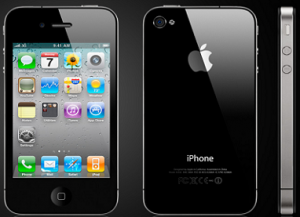
With the launch of iPhone, androids and other smartphones, cell phones are becoming popular route to the Internet. They provide quick and easy access to information, allowing you to make decisions on the go. As a result, more and more businesses are opting for mobile sites. However, many small business websites fail to function well on cell phones. They either take up a lot of time to load or are difficult to navigate. Mobile searchers too lack in time and patience; thus, it is essential to make it more user-friendly. And we have a few tips to help you with speed, usefulness and easy navigation.
Testing site on cellular network
The initial step to provide a better experience to your users is to test your mobile site on cellular networks on a regular basis. And while doing so, make sure you are using the data network of your wireless carrier. Remember to turn off the Wi-Fi connection of your cell phone before launching the web browser. Next, type the URL of your business website. It should not take more than five seconds to load your home page fully; if it does, especially if the loading time is 10 seconds or more, you should start working on it.
Also, avoid showing a large image, long video or a decorative splash page as your first displays. They take more time to load. In fact, Flash animations do not display in many mobile browsers. Again, mobile websites where users need to zoom, pinch or scroll to see the content cannot be defined as user-friendly sites. For a mobile website, you need to put into display some vital information like your address, phone number and other contact details.
Mobile responsiveness checker tool
Make easy improvements
Depending on your test results, you need to focus on the necessary improvements. Redesign the site, if necessary. In addition, you can apply a few quick and easy fix. For example, you homepage should include some of the vital information. If you don’t have them, here is out checklist:
- The name of your business
- Description of your business, including you major keywords
- Phone numbers/ Customer care numbers
- Hours of operation
- Street address
- Email address
Another tip is to provide this information as plain text, instead of displaying them in an image. There are several advantages of doing it. To begin with, clicking a phone number will start the call for many mobile web browsers. Phones that come with mapping app will allow the users to view the map simply by clicking a street address. The same goes for email address, which will open the mobile email app.
Thus, by making the browsing experience easier for the mobile users, you can influence them to do business with you.
What to Keep in Mind to Build a Mobile-friendly Website
The number of Smartphone users has shot up exponentially. With this ever-increasing number, add the availability of excellent internet connections to mobile devices and you will realize how throbbing this market is. Websites have to be created so that they can be accessed easily by Smartphone and Blackberry users. The unfortunate matter is that most of the websites available for computer users do not have a cell phone edition. That is bad for business because mobile device surfers are even more critical about websites that do not cater to their demands.
Use web analytics to take decision
In other words, you have to start building a Smartphone version of your existing website. To do that, the first step is to check out statistical data. Google Analytics will be a great help here. Find out if the users checking into your website using Smartphones behave any differently than those tuning in from computers. If there is a significant deviation in their approach to your website, you have to think of a designing chapter so that your website is friendlier to mobile users. A basic change in approach would be to get rid of that superfluous Flash intro to your website that Smartphone users detest.
Build simple clean UI and UX
The second step would be to think like a Smartphone user yourself. What are the features that you would like to be displayed on your cell phone screen for a quick glance on the move? Store Location is definitely one of them! Smartphone users may want to check the address or phone number of a store while they are somewhere near it. They are less likely to use the large Services page if you compare it with the relevancy of a Store Location page. Of course, you will have the Services page but as a second-tier option. Thinking on these lines will help you give what mobile users really want.
Test in multiple screen resolution tool
Finally, you cannot rule out the possibility of users tuning in from tablets. These devices are on the height of their popularity now. Blowing up a website regulated for the Smartphone screen to the width of a tablet screen will make it appear grainy and annoying. You have to check up that your websites work for both Smartphone screens and also for tablets. Design a separate version or ensure that the acoustics on your website are sensitive to tablets as well as Smartphones.
Navigation Tips for your Mobile Website
Picture this. Ravi is out on the streets, headed for an anniversary dinner. He has decided to pick up some flowers on the way. He fishes out his cell phone from his pocket and carries out some local searches to arrive at your website. You have a store selling flowers at a location nearby to where Ravi is now.
In this situation, how do you develop a website that will easily convert this online lead into sales? You need to have a mobile version of your website that Ravi can quickly browse through, find what he is looking for and make the purchase he wants. You have to pack in your entire standard website into a pocket-size edition, like this one:

Before hitting the first tip, ask yourself: what are the web pages on your website that a user on the move will most likely require. For example, if you function only as a brick and mortar store, a mobile phone user needs to know your address and some assistance to reach that address. Why don’t you provide this information the moment a cell phone user checks into your website?
It saves a lot of time for the user and you can quickly get down to business. Instead of taking the users, who have already decided to buy, through pages of sales pitches, give them what they need: a quick guide to reach your store. That is the first navigation tip for you: give the user what they want as quickly as you can! Look at this example:
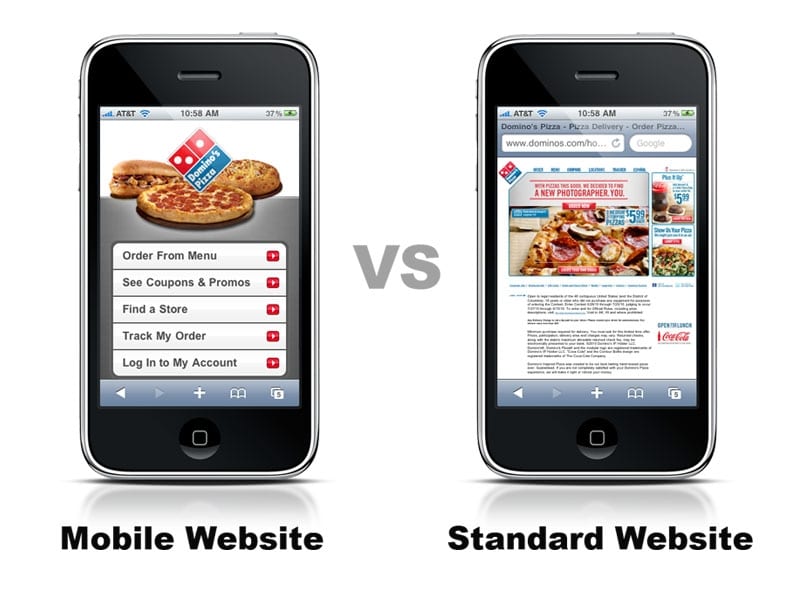
Go high on the convenience factor. Ravi is headed to a nice cozy anniversary dinner. Buying flowers should not make him break into a sweat! You can provide him that convenient experience by following simple conventions of navigation designing. The user must know clearly which drop-down boxes reveal what and where web links need to. There should be no ambiguity about the navigation designs.
A simple example is to use the sign of a magnifying glass to suggest that it is the search box. Attention to little details like this can elevate your mobile website’s acceptability among users. In this context, be more mindful of the font size. Mobile devices can be small screens or larger tablets. The user must never go through the trouble of zooming in on your content!
Keep an eye out for the color contrast. The background color of the website and the text written on that color must not form an oddball combination. Contrast in color should elevate the experience of reading what is written on it. It should not take away anything from the mobile website’s acceptability. Since the user is probably waiting on the signal to turn green while he is sorting through your website, you are best suited to provide the content in a contrast that sharply accentuates the written words.

While we are on this point, think about the factor of the touch-screen that the user is checking the content on. On an average, it requires about 44 pixels, up-down and left-right, to select an item with a finger touch. Be sharp about this bit. You don’t want the user to feel intimidated by a touch pattern that makes them conscious about having fat fingers! Use touch feedback to ensure that they get what they tap for, even if the taps are a little misplaced.
Mobile users checking up your website’s mobile version should not find it thematically different from your website’s desktop edition. In terms of navigation and user experience, of course, the website’s two versions have to be completely different. But in terms of color use and basic designing, there must be some similarity to establish the link between the two versions. It may be that Ravi has browsed through your website’s desktop version in his office a couple of days back.
Now that he is on the road and tuned into his cell phone, he must not feel completely at sea about the two website’s versions. Give him visual aids to make that connection. It must end with colors, fonts and themes! Beyond these touchstones, the mobile version should be an entity by itself. Look at this as an example of the same website should look on different devices, depending on how each device is used, as that, in turn, reflects on how the website is perceived by each user:

Mobile Website or Apps: What Does Your Brand Need?

The difference between mobile website and mobile app
Taking nothing for granted, let me first distinguish between a mobile website and an app.
The former is a mobile version, usually a miniature edition, of your usual website. This mobile website is designed for people who want to check up your website on their mobile devices like a smartphone or a tablet. The requisite of a mobile website is that you should stick to providing information that a user might need on the go.
The mobile app, on the other hand, is something that users download and install on their smartphones or tablets. Mobile apps can be used only by users with an Android or Windows device, not to mention the iPhone or the iPad. On the other hand, mobile websites can be used or surfed by any mobile device with an internet connection.
There is a difference in how these two varieties of mobile access are used to check up your brand. Because mobile apps have to be downloaded and installed for use, people needing just a quick check of something do not use the app. In other words, the number of unique visitors on a mobile website is much more than those offered by mobile apps.
It is not that mobile apps do not offer any such value to your brand! They have a distinct advantage over their counterpart in the sense that people spend more time on them when compared with mobile websites. With an app on their phone, a user checks into it more often and that can lead to potential leads for your brand.
How to choose between mobile website or mobile app
Use mobile apps for your brand only after considering these factors:
- You can use pop-up notifications on the user’s phone even when they have not clicked or checked into the app. This is a very potent tool to drive sale. A mobile website can never make this happen, at least till date. Pop-up notifications allow your brand to grab visibility in a way like nothing else can.
- To add maximum value for your mobile app, you need to figure among the top 100 on the app bank, like Google PlayStore. You need to drive your team towards that goal. It is common knowledge that the optimum number of downloads go to apps which feature higher on the ratings.
- Factor in another hard fact about mobile apps: the chances of user retention is abysmally low. Once downloaded and installed, more than 80% of the apps are never checked again! That gives you an idea about how to use this tool in your marketing. If your app can tide over this pit, you should opt for this form of mobile marketing.
If you are thinking of opening a plank for mobile web marketing, here are some pointers to look at:
- Responsive and adaptive mobile web designing is a must-have. There is no alternative to this!
- Your mobile website must adhere to SEO rules and ensure that it takes mobile searches seriously in terms of keywords. Of course, the keywords for a mobile website optimization can never be the same as the ones you use for its desktop version. No users types in the same keywords for a search sitting at home against a search in the car.
- Pull up your socks on the user experience. Use the thumb rule: think like a user yourself. What do you want to know on a mobile website? For example, make store locations or contact details more readily visible and scratch flashy intros.
- Make the mobile website light. There are many zones that still work on a 2G connection, let alone 4G or LTE. You cannot lose those users by having a heavy, image or video rich website. Do not allow the website’s quality to be compromised because the user does not have access to a faster internet speed.
As obvious, both of these platforms have their pros and cons. You should try to opt one or both by evaluating these factors. After all, your aim is to increase brand visibility and access through the use of mobile devices. Pick what works for your brand.
Mobile Apps Versus Mobile Websites
Since the mobile applications came into picture this also creates a questions to developers that whether developing applications for mobile will be proved to result in good ROI or creating mobile websites are better option in today time. As mobile apps and websites are catching attention to many smartphone users and people who are about to be mobile maniac, in this article just an overview is covered comparing the better choice in new mobile era to go for developing mobile apps or mobile websites.
According to this generation mobile has become life for some people, they will feel as handicap if said not to use mobile for just 1 day. Yes it means every thing to them.
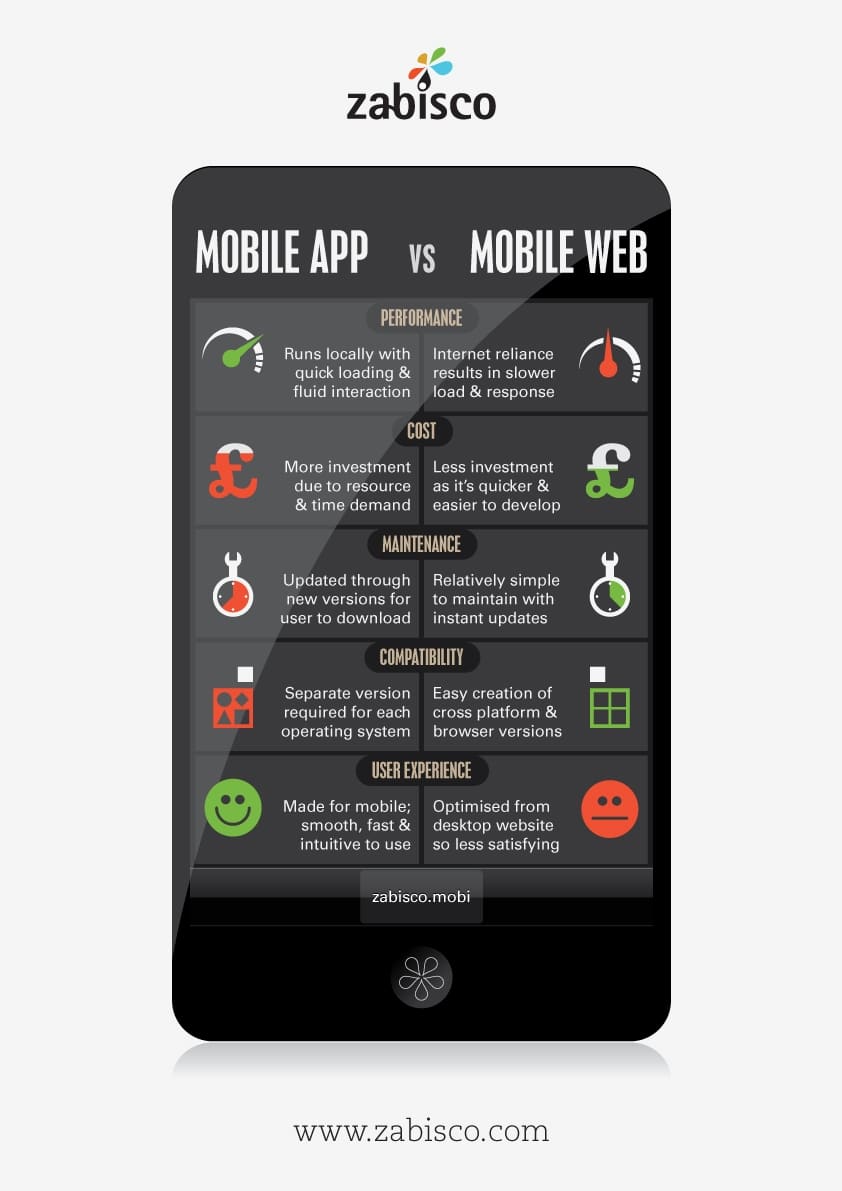
A Development Dilemma
It generates a perplexed situation some times the concern should go mobile? With extreme rush of mobile applications is taking place. It is very hard to control our drive into development field. Should you develop a mobile app or devote your resources to optimizing your website to be viewed on mobile?
The overview of few pros and cons of each might help you to take right decision.
A closer look at how each option stacks up:-
Pure Mobile Websites
- Some Basic principles Accessed through browsing
- Static Navigational user interface
- Requires Connection
- Somewhat limited features
Mobile websites are faster with reasonable development cost and require no approval process with mandatory approval process.
Pure Mobile App
- Accessed After Being Installed
- Interactive User Interface
- Available offline
- Can make use of phone features like location services, camera, etc.
Mobile applications are very fast with expensive development cost and availability of app store
Time usage
Mobile apps trump entire web( mobile and desktop) in terms of how much time usage spent with each. According to comScore and alexa data compiled by flurry analytic, Mobile apps are taking up a greater share of users’ time each day compared to mobile and desktop usage, which was dominant just two years ago.
User Reach & Engagement
Mobile browsers have far greater reach than native applications, but data shows that native app users are generally more engaged. mobile analytic company CEM4mobile sampled 56 million mobile impressions to assess the difference.
Content Usage
For many, the choice of whether to pursue a mobile-optimized site or mobile app will come down to content. How are people going to interact with you on mobile devices? A breakdown of which platform mobile users prefer for different task can help.
So what is right for you?
There’s no one answer that works for everyone. if resources allows it. some suggest building both to capitalize both platforms and audiences. In order to decide which one is right for you, it’s important to evaluate your specific goals, Consider all of the criteria above and determine which most closely aligns with your intended audience.
Facts about Mobile Internet Searches You Need to Know

The mobile internet is here! Online businesses that are yet to wake up to this rising powerhouse are losing out on revenue and also shutting their doors on market that will dominate searches in the very near future. It was not long back (2010) that the iconic Steve Jobs openly wondered if mobile searches are happening at all.
In 2013, comScore tells us that searches are the number 1 activity on mobile internet devices! You can imagine how this pocket device has growing in stature of late! In 2012, the amount of mobile internet consumed hiked up by 10%. If you combine this figure with the fact that mobile searches are the number 1 mobile internet activity, you get a summation of how big this industry is.
There is a difference, of course, between the searches made on mobile phones or tablets as compared to those made through desktops and even laptops. Mobile internet searches usually revolve around local areas in 75% of the cases. That is because people who are on the move quickly check up for an address or a route map to get somewhere.
Users do not usually check for services or product information through mobiles because they like to get it on bigger screens of computers. For example, a user will search for the nearest clothes store on a mobile but check out the fashion trends on laptops or desktops. Companies have to attune their online division based on this very trend. You can try out these two mobile SEO ideas:
- Responsive Design Single URL: Use it to provide information and news to users in a format that they want, depending upon the device that they are using for their search. Users looking for information or reading material want to get them in a format of their choice so that it becomes easier for them to imbibe it. As an SEO firm, you can attune your service to the device the user is searching from.
- Dynamic Serving Single URL: This works best for online services. Users searching through mobile phones are most likely to look for local store addresses or route maps. Provide them with their requirements in your website’s mobile version. As for searches from desktops, provide extensive information about your products or services and other details.
Mobile Searches: How they Impact Your Online Marketing

Mobile devices are for the future. A jaw-dropping 60% of online searches happen through mobile devices like cell phones, tablets and Smartphones (we call it mobile searches). As a result, online marketers have little choice but to attune their search engine optimization with the need of the hour. You need a mobile edition of your website and blog. The purpose is to offer mobile device users to get access to your content without having to spend too much of bandwidth in getting to it. If you offer the version that is usually available to computers, the user will be repelled quickly.
However, as obvious, it is not enough to have a mobile edition of your website. You need to optimize it for searches made from mobile devices. A quick study of Google will reveal that mobile users usually look for store locations or quick checks while on the go. In other words, more than the services page or about us page, you need to create mobile versions of the store locator or the contact us page. This will enable your mobile device visitors to find what they are looking for in quicker time.
In the same vein, you must guard against faulty redirects that take your visitors to the wrong page because you don’t have a mobile edition of that particular web page. Experts advise that it is a much better to direct mobile users to the computer version of the web page that they are looking for in the absence of a mobile edition instead of redirecting them to a wrong mobile-friendly web page. You will tend to lose out on online revenue if the mobile redirects are headed to wrong web pages or simply dead links.
Google is pretty serious about the way online marketers should look at mobile websites. It has added a new feature to the Google Webmaster Tools known as Smartphone crawl error stats. This field will show you data on where you are going wrong on your approach to Smartphone users. You will get a comprehensive understanding of all those web pages that are being wrongly redirected when mobile users look for them. Fix these loose ends and you will be able to tap the SEO juice of online marketing.
Sneak Peek of Google’s Update for Mobile Searches
This April 21, 2015, Google is slated to release updates to its algorithm that deals with searches made through mobile devices & mobile first indexing. As you are well aware, mobile searches are so much in vogue that there are some websites, like myntra.com, that are doing away with their bona fide websites.
They are going to rely entirely on mobile apps! Even flipkart.com is slated to go that way soon, because they are apparently not happy with the revenue that they are generating through PCs. In this post, I have shut out all the clamor gathering storm around the April 21 update of Google and listed some key points that you need to know.
Changes to Expect from Google for Mobile Searches
The buzz from the ground is that Google is coming up with a completely new algorithm for mobile searches. It will be able to index through Android as well as iOS apps. The chances stem from the fact that lately Google has been tinkering hard with their mobile SERP, the app searches and even searches on Google Play.
Experts also feel that with the new algorithm, there will be a new indexing system designed solely for mobile searches. There are definitely indications that Google has already started testing an index that can pick up content from apps.
Question: Will Traditional Searches be Affected?
The question that you must be waiting to ask now is, how will this whole restructuring affect the rankings of the usual, traditional searches? For example, if your website does not have a mobile version, will that hamper your ranks? The answer is no, from Google at least! But there is no one out there who will go out on a limb to support you on your carrying on without a mobile edition of your website. You can launch a workable version for mobile devices, if not a state-of-the-art mobile website.
The Magnitude of Impact of Mobile Searches Algorithm
It is already in the grapevine that the April 21 update will be more impactful than the Panda and Penguin updates. That’s saying quite a lot, actually! It is still early days to ascertain thoroughly, but this new update will surely have a strong impact on Android devices. Impact is also billed to be felt on iOS, though these two are quite different from each other in terms of searches.
An area of difference exists in the zone of deep linking. Google is looking at the use of emails through mobiles and how it affects the SERPs. Accessing emails through hand-held devices have shot up by 180% in the last couple of years. Google is not going to let that be brushed under the carpet!
Does your Website Qualify for Mobile Search?
At this critical juncture, you surely want to know if the website that you have is considered ‘mobile friendly’ by Google. Make note here that the answer is either Yes or No for Google. There is no percentage figure to indicate how mobile friendly or otherwise your website is. To know whether your website qualifies, key in a simple query on your mobile with the tag ‘site:nameofwebsite.com’.
You will get to know the answer almost instantly. This is called Google’s Mobile Friendliness Tool. There may be times when there is some lag of time between the checking tool and the crawler. As a result, you may see different results for a website at the same time! To keep out of this tangle, always check with this tool when you uploading a website and making it live.
Mobile Friendly Website or App?
There are brands that are landed with the thankless choice of picking either a mobile friendly website or developing an app. This may be due to financial constraints. Ideally, you want both! But if you cannot, you must go for the mobile friendly website. Try to concentrate on brining this website seamlessly across all mobile device platforms. If you have a user experience that cannot be delivered without an app, only then pick it over a mobile friendly website.
The Final Word
This is a developing story and will have its twists and turns by the time the update rolls out.
Mobile B2B an Unique Way to Increase Your Business

In an era that has seen the technology being used at its peak level and innovations being introduced almost every next day. Internet, a few years back from now, was thought to be something of a use of high-profiled user. But now it is used by almost everyone.
Today it has become so user-friendly that even a small kid can operate and work on it. In the same manner mobile phone which were considered to be an item of luxury and was a status symbol to be flaunted only by the rich, has now become a day-to-day utility article.
Thus it has not spared even the B2B marketers. In today’s time where the number of mobile phone connections is very rapidly outpacing the number of peoples in the world, using mobile phones have become a very important tool for the marketers. They are also using this instrument for the B2B purposes.
The ways in which they take recourse to mobile phones are as here under:
1) Developing mobile apps:
In this era where mobile apps are on high rise and giving its users a high level of service satisfaction, the marketers are bound to look on it as an important tool to develop connections and expand their reach. By tying up with mobile manufacturers, they can always promote their service or product and can reach out to people very easily. It also has a very far-reaching ability too due to its diversified users.
2) Advertising:
The consumers are always the king, thus it is necessary for the sellers to reach out to the prospective customers and not the other way round. Thus mobile phones, which have already become an item of daily use for the every individual possess, is the best option to reach the potential customers. Marketers can always use this medium of advertisement and thereby increasing its reach to every corner and part of the world, literally.
3) Developing visual content:
Those days are gone when people use to hear or just see the poster of a product and be lured with it. Today the customers demand visual content that sounds more appealing to them. It has been proved over the time that videos have a more lasting effect than any other medium. Thus in order to have a more lasting and effective promotion you should develop your content in video form.
This helps the customers to download such advertisement anywhere and have a look at it with the help of their mobile phones. Today the mobile phones have become a handy tool in downloading such elements and have a look at them over and over again. Thereby the advertisement is very handy and useful one.
4) Crafting websites suitable for mobile phones:
Internet, as stated above, has spread its wings to almost all sections of media. Thus there are many people who surf through internet over the mobile phones. So it is very essential for the web developers to design or craft the websites so that it suits the mobile phone configuration and the people doesn’t have to face the problem in surfing about the websites from their mobile phones.
5) QR codes:
This strategy is used by various segments of marketers but not by the all as this requires a better web developer and a good channel of advertisement. Quick Response (QR) codes are a graphic code which when scanned through the mobile phones can land to the company’s page directly, and can see the products from there. This not only makes the process faster but is also user-friendly and hassle free for the user.
Thus we can say that today the mobile phone has actually made the way for the marketers. By going on this way they can see the world as business hub and can sell their product easily and comfortably. This has helped in developing the business a lot and taking the process of marketing to an exciting era. So all that we can say is not only the number of mobile phone connections are on an increase but in parallel to that its utility which is seeing a huge surge in the coming days are also one the increasing side.
Google’s Latest Mobile Search Insights
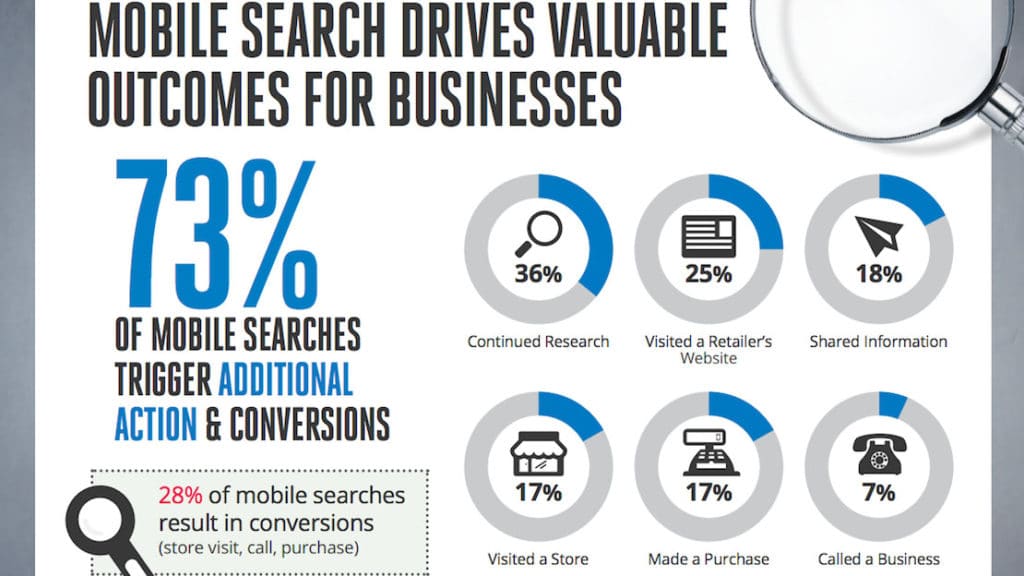
True to its motto of constantly innovating and updating their knowledge banks, Google has conducted a survey on mobile users using the internet. According to the findings of the survey, 53% of the respondents would immediately leave the mobile site if the page loading time exceeds 3 seconds! This average is faster than even the time users allot for searches and site visits through laptops or desktops.
Now the concern is that a survey of Google on mobile sites has come up with some damning information: the average time for a mobile landing page to load is 22 seconds. That is much higher than what an average user is willing to allot for a site. What this essentially means is that mobile sites and landing page owners are fighting with their hands tied! Their sites do not load faster than what their users expect from them. End result: they migrate to other options.
No matter what the industry or the genre of the site, users are not willing to spend (read waste!) a moment longer than the one where they make the click on a link. They need the site on their screen almost instantly, without any consideration for the site or web page’s volume or content.
Ecommerce site users abandon their shopping carts if they find that there is a second’s delay in the page uploading time. Google has evidence that 70% of the web pages with visual content above the fold takes about 7 seconds. Now, with time elapsing from 1 to 7 seconds, the probability of the user abandoning the page rises by about 113%!
All is not lost for mobile site owners, though. Google has underlined that by a simple compression of images and texts, 30% of web pages can bring down their volume by 250KB. You can use the Test My Site tool of Google to find out how you can make your site lighter on the bandwidth, including the degree of mobile friendliness and page uploading speed.
Mobile Marketing for Ecommerece

The whole world has gone mobile. Are you ready to take advantage of it? If you want to maximize your marketing resources, the answer had better be yes. Your ecommerce strategy must include mobile marketing along with ecommerce content strategy in order to reach a large and growing segment of the population.
Steps to integrate mobile marketing into eCommerce
- Create a mobile friendly website,
- Target mobile phones in your advertising,
- Use SMS promotions
- Develop mobile applications for your business.
Mobile Friendly Site
First and foremost, your website needs to be friendly to all users, particularly mobile phone users. According to Search Engine Watch, a recent Google survey shows that seventy-two percent of mobile users say that it is important to them that websites be mobile-friendly. 67% say that
“A mobile-friendly site makes me more likely to buy a product or use a service.”
A mobile friendly site is one that has mobile-friendly features like easy search, limited scrolling, and big buttons; easy access to important business information like purchase instructions and contact information; and most importantly, load times of less than five seconds.
Investing the time and energy to make sure your site is easy to maneuver for mobile users pays off—again, sixty-seven percent of users are more likely to buy. Let your mobile users know you care about your business by making their interaction with your website less stressful and more productive.
Ads Targeting Mobile Phones
Not only can you make your website easier for mobile users, you can draw them in with advertising that targets mobile phones specifically. Keep on top of emerging technology that will allow you to not only send advertising to mobile phones, but will allow you to send ads to mobiles at specific locations or those whose users are looking up certain keywords.
Mobile phone ad technology will be the way to reach potential customers who will be most likely to be interested in what you are offering. Mobile advertising is a trend that will only grow; analysts predict that this medium will grow by over 38 percent steadily . Get on the ground floor now and take advantage of this new wave of advertising.
SMS Promotions & WhatsApp
An SMS promotion is like a coupon that is received via text; usually in the form of a promo code to be redeemed online or at a store, (SMS means “short message service” and is the technical term for text message). By sending a text with a promotion such as a percent off coupon, gift, or other exclusive offer, you can draw the user to your website—essentially getting them into the door of your “store.” Make the SMS promotion as user friendly as possible and again, keep on top of emerging technologies such as QR codes that can be scanned by a phone for a coupon or other up and coming developments.
How to do bulk SMS marketing [Video Tutorial]
Mobile Apps
A mobile application or “app” can further engage your potential customers with your business. For example, if you have multiple stores, you can provide an app to locate the nearest store based on zip code. You can establish a “deal of the day” application that users can run and check for a daily sale. You can build an Android app on Google Play or iOS app.
This sort of application can create a more positive customer experience and in turn, net you a loyal customer. You can also create an application that is interesting or fun for your potential clients. If a game application would be interesting to your audience, use that as a part of your ecommerce plan. The trick is to offer applications that will be of value to your customers and improve their experience with your business.
Related reading: App Store Optimization Guide or ASO guide
Mobile advertising will only grow in the future as technology makes it easier to send and receive advertising by text, audio, video, and applications. By using SMS promotions, WhatsApp, mobile apps, and mobile phone targeting in your advertising, and most importantly by having a mobile user-friendly site, you can take advantage of this emerging resource and maximize your ecommerce dollar most efficiently.








Hey nice way of sharing about it. Keep Sharing… Thanks!
Thanks Albert
Mobile application development is a lucrative career for the present and the future days to come. Enterprises of all levels benefit well with the mobile apps and the mobility companies that are thriving hard to get that well crafted app for a business are growing rapidly in the present era. For the enterprises, finding the right mobility consulting company is utmost important.
Agreed. Mobile app, mobile searches, mobile marketing are getting huge importance now. Businesses must not ignore these. Thank you Lakshmi for your comment.
Well I don’t know if anybody knows it or not but Nokia has announced that they have partnered with Vodafone India and Airtel and Reliance to offer integrated billing solutions on the Nokia Store in India. This would let users download apps from the Nokia Store and pay for their downloads as part of their monthly mobile phone bills or have the amount deducted from the pre-paid balance.
This would surely increase the earning potential of the paid apps that developers submit.
Yeah surely World is targeting text based ads on its customers to increase the sales. Everybody cannot have a computer with an Internet connection, mobile ads are perfect for every one around.
Thanks. True
Hi Debajyoti, Clearly Explained about why we should have a mobile version of our website. Thanks for Sharing!
Thank you Sai. Yes businesses must have a mobile responsive website and mobile app for multichannel presence.
I seem mobile marketing is a most safest way for both mobile users and mobile marketer. A most big advantage of mobile marketing is that i saves marketer’s valuable time and get a quick result. In mobile marketing there are mobile message recipient does not stop any kind of service at a time so if he likes or does not like that advertisement he will sure give answer immediately.
Thank you Becca.
hello,
true very very true if i am at the business i must take care of the cost as per my range as we see we have to develop new innovative app to attract the user and we should have to take care of the game app which are very complex and costly.
thanks for sharing your idea.
Thank you
Taking on a mobile app strategy is about much more than the tools you will use or even the end product itself.
You need to take a deep dive into the goal of your enterprise mobile app strategy and determine exactly what it is that mobile apps will do for your business.
Yes absolutely agree Alexandra. The objective and KPIs must be clear. Without clarity and just for the sake of jumping into mobile marketing will not work for businesses. They must research , validate and connect their product or service well with the customers and to enhance their experience and better serving them , businesses should develop app or dive into mobile marketing with a well defined strategy.
It is very informative information and I like it. Good to read it
Thank you
Great article
Thank you for sharing a guide on mobile marketing great informative article in today. Happy New Year, DEBAJYOTI!
Thank you & Same to you :)
In today’s time, every person has a smartphone. So mobile marketing can be more successful if we will advertisement in the right way. And in this article, you are very well elaborate. So thanks for this fruitful statistic.
Thank you
Mobile-optimized websites and marketing methods are vital to business success in the modern market. Nowadays everyone is using mobile more than any other device. So, It becomes necessary to gain full knowledge about mobile marketing.
This article gives me this opportunity.
I am really thankful that I have read this article.
Thank You
Thank you Aiden.
Find the power of targeted marketing with Collectcent,your top choice for Mobile Advertising. As standout performers in Mobile App Advertising, we use superior Advertising Networks and Platforms to connect with your audience. Our expertise ensures that your campaigns deliver high engagement and conversions. Partner with us to enhance your brand visibility and achieve your advertising goals. With our innovative strategies and cutting-edge technology, we provide comprehensive solutions tailored to your needs. Count on Collectcent to tap into your mobile advertising power and boost your business growth. Let’s revolutionize your advertising together!